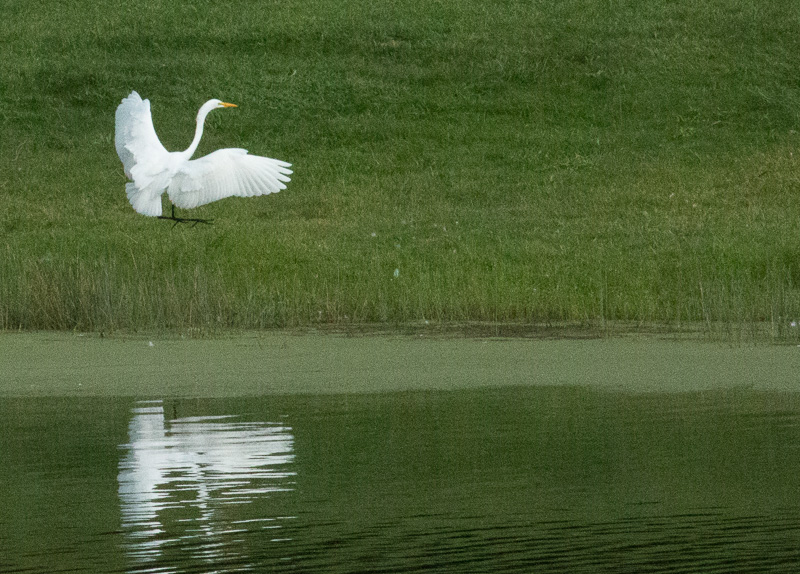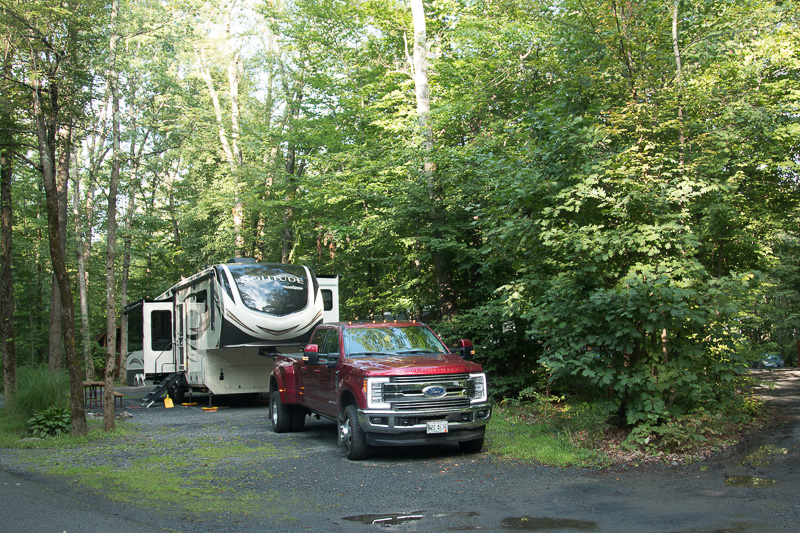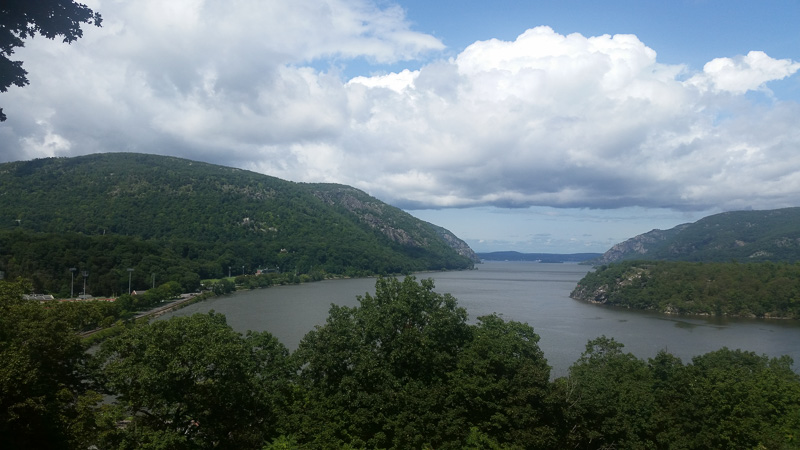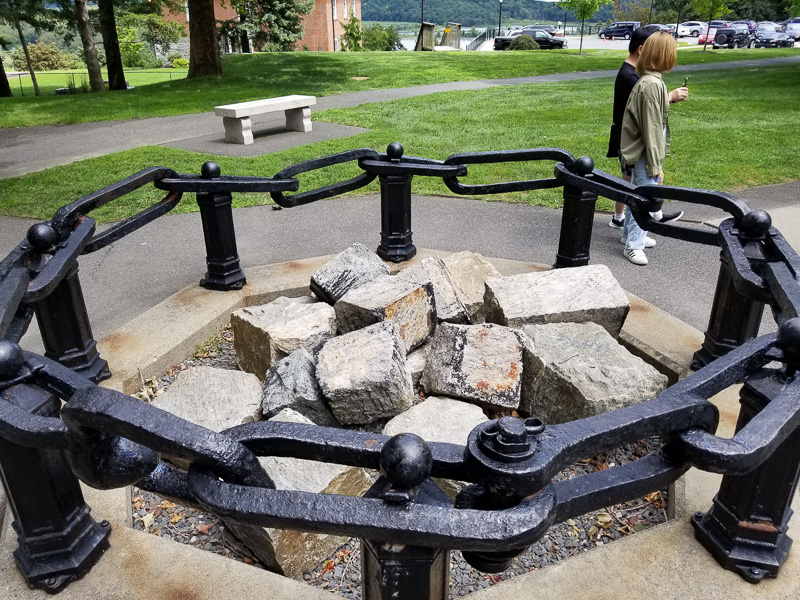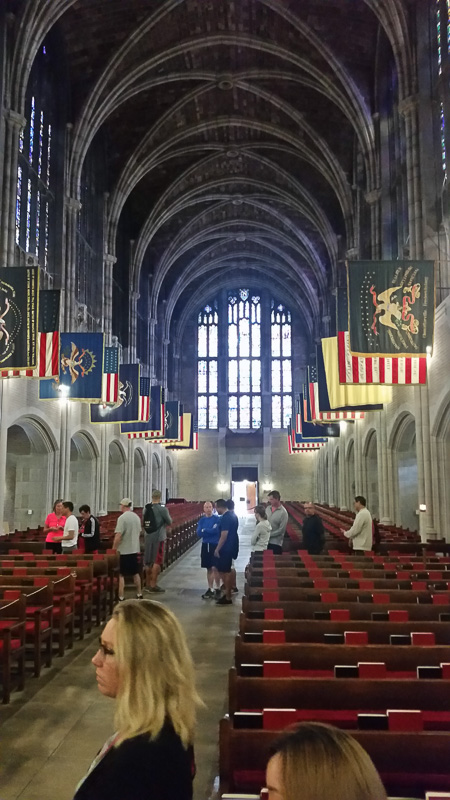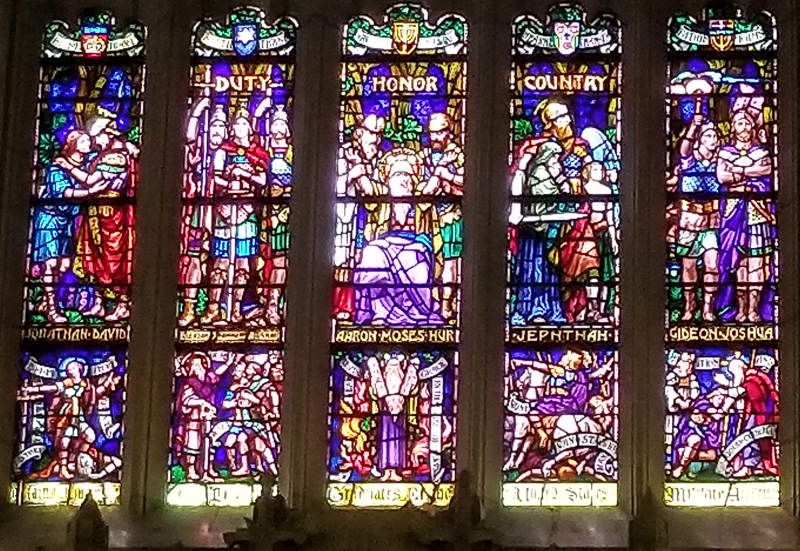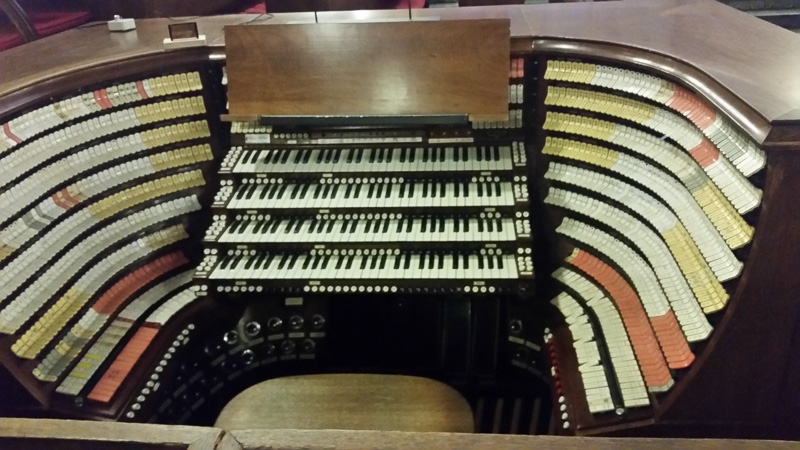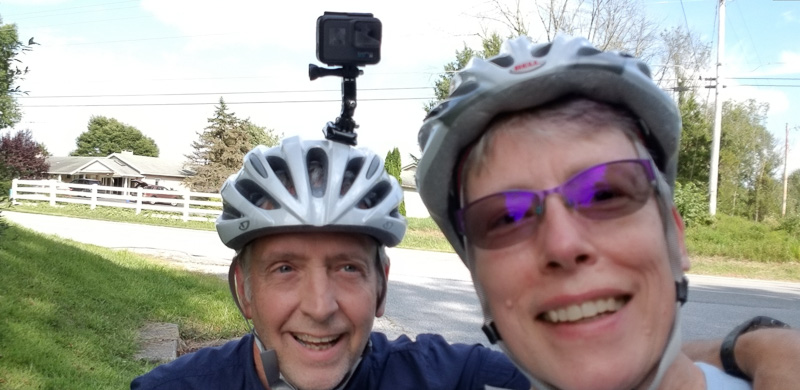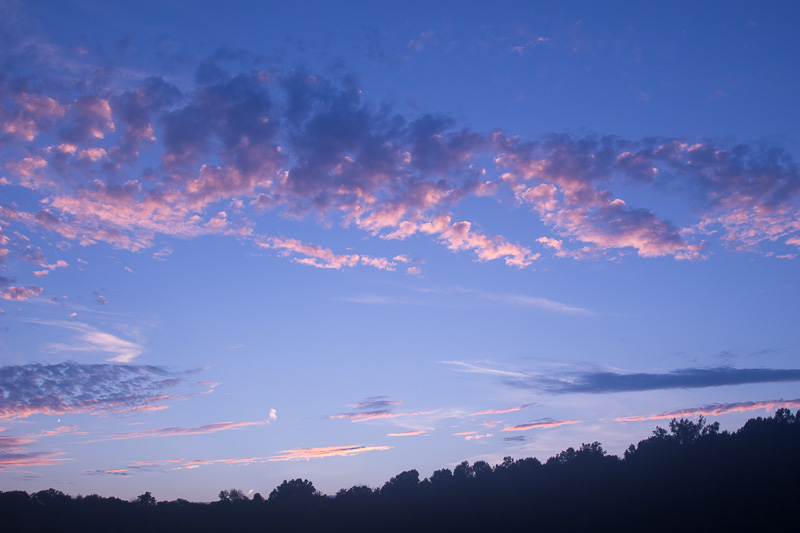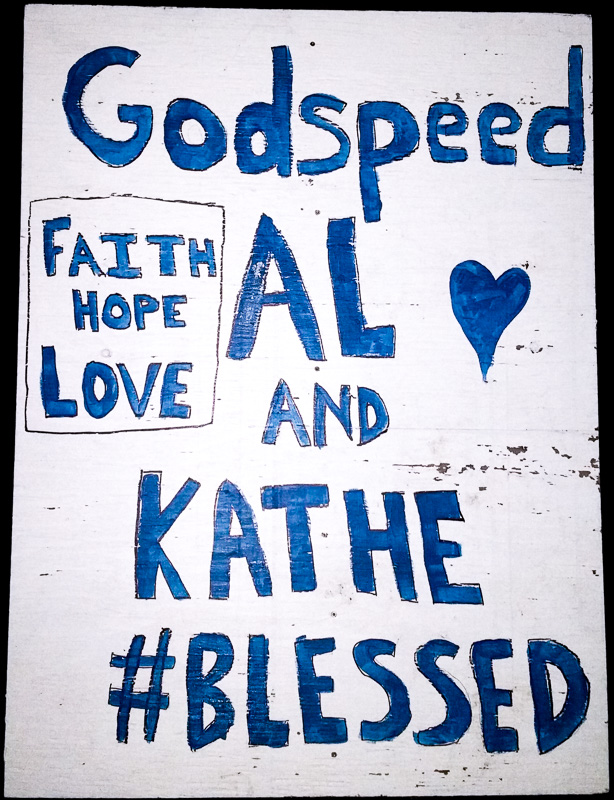One of the things that Kathe and I were—and still are—looking forward to on our trip is riding our bicycles. We even got new ones before leaving (our then-current ones were about 16+ years old).
I don’t think that I’ve biked 50 miles total since I was a teenager, back in the paleolithic era.
We’ve done about that in the past 6 days.
Back in Indiana (we’re now in Ohio), we pedaled either 22 or 25 miles, depending on whose odometer/GPS you believe, on the Pumpkinvine Nature Trail from Goshen to Shipshewanna and back.
Today, we rode 25 miles on the Ohio-Erie Canal Towpath in Cuyahoga Valley National Park. I’ll write about the canal in another post. Today is about biking!
One of the nice things about biking is that it slows us down, allowing us to observe what’s around us.
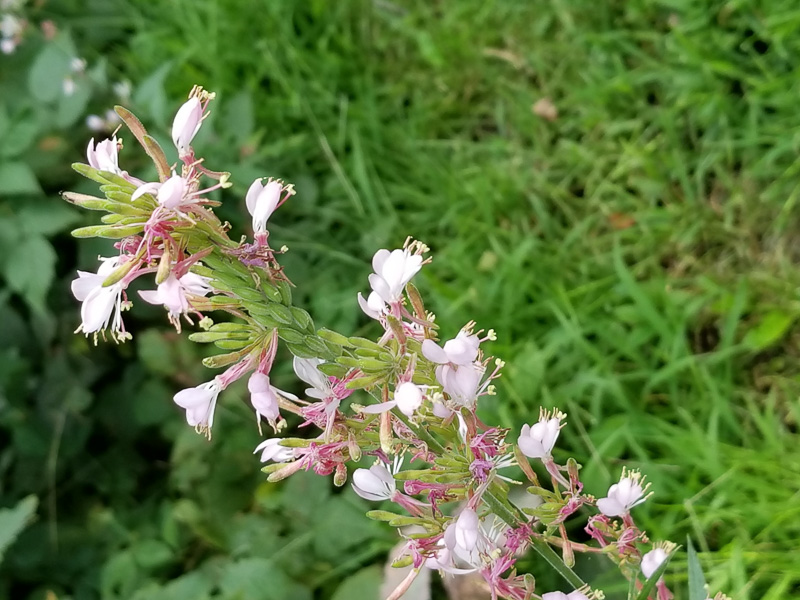
Pumpkinvine Nature Trail
The Pumpkinvine trail is 25 miles long, joining the towns of Elkhart, Goshen, Middlebury, and Shipshewana. We only took the middle section, about 11 or 12 miles. Some of the trail is through miles of agricultural land with fields on both sides as far as you can see.
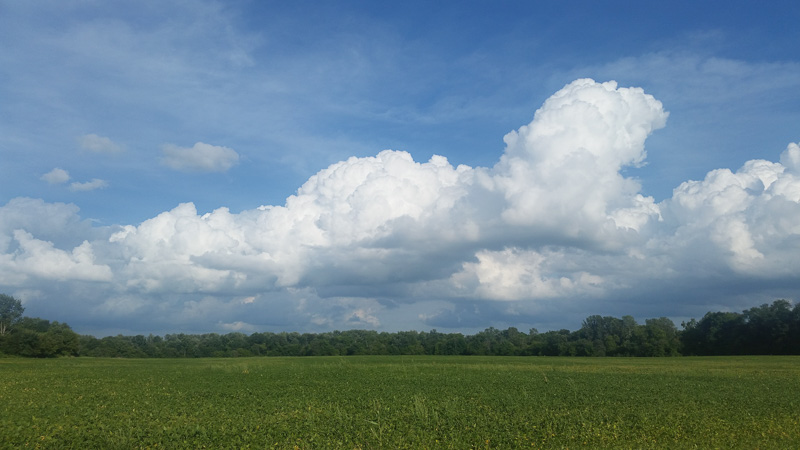
Some of the trail is wooded.
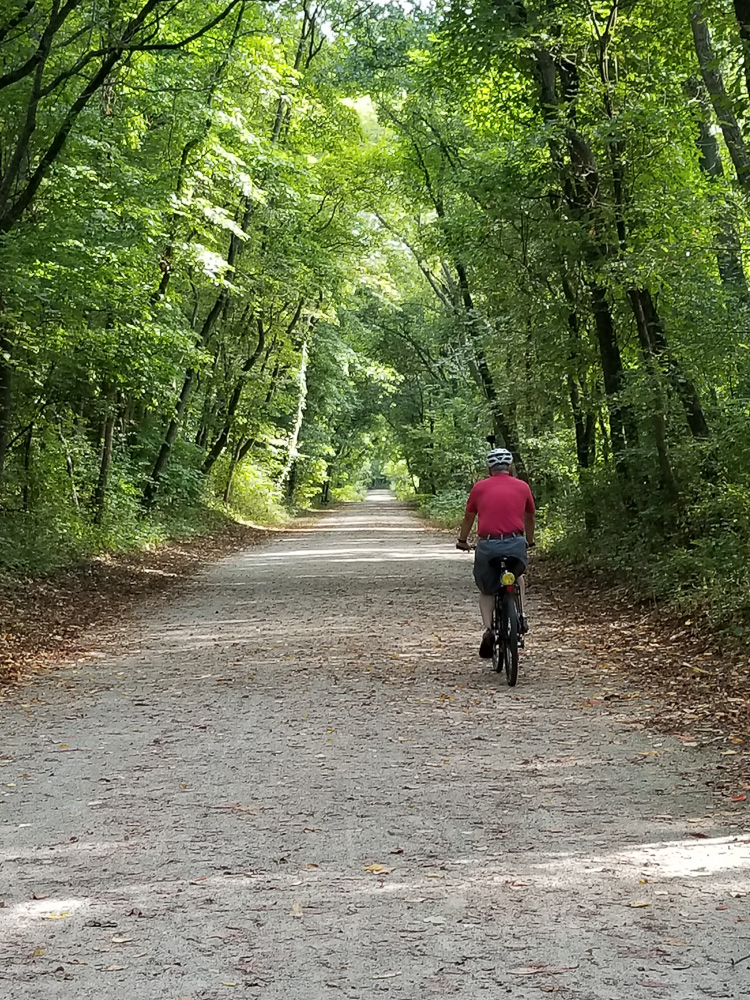
Other parts are on sidewalks along the street. I was always told as a kid not to ride on the sidewalk, but on the street. At least where the trail runs along a street, they want us on the sidewalk, not the street!
There is a 1.7 mile section of the trail for which the property was only recently obtained; there the trail is under construction. For this section we had to ride on the side of three county roads, but there were very few cars. It probably isn’t true, but it seemed like we saw more buggies than we did cars. Being a Sunday, we passed several homes where worship was being held, with many buggies parked outside.
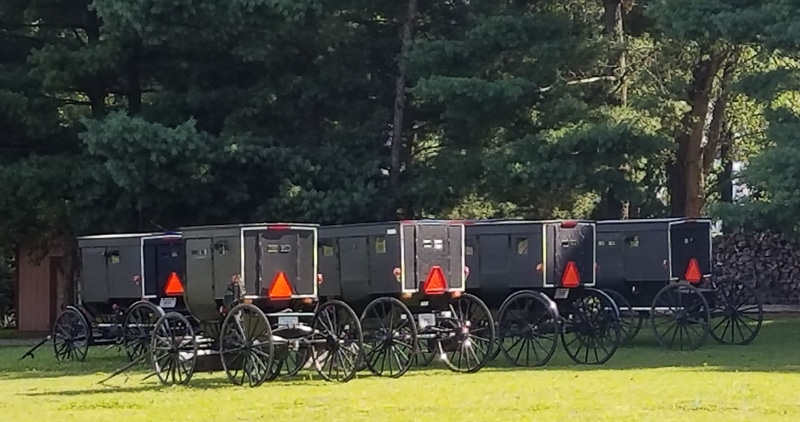

In MIddlebury, we wanted to see the Krider Gardens which we had heard about from other rally attendees. As we approached Middlebury we were waiting at a street crossing. We asked another cyclist if he knew the trail here. “Pretty well.” We asked how to get to the gardens and he offered to show us (it was right on the trail). As we parted, he told us he was the chair of the Middlebury Parks Commission, which oversees / maintains both the Middlebury section of the trail and the garden! “Pretty well,” indeed!
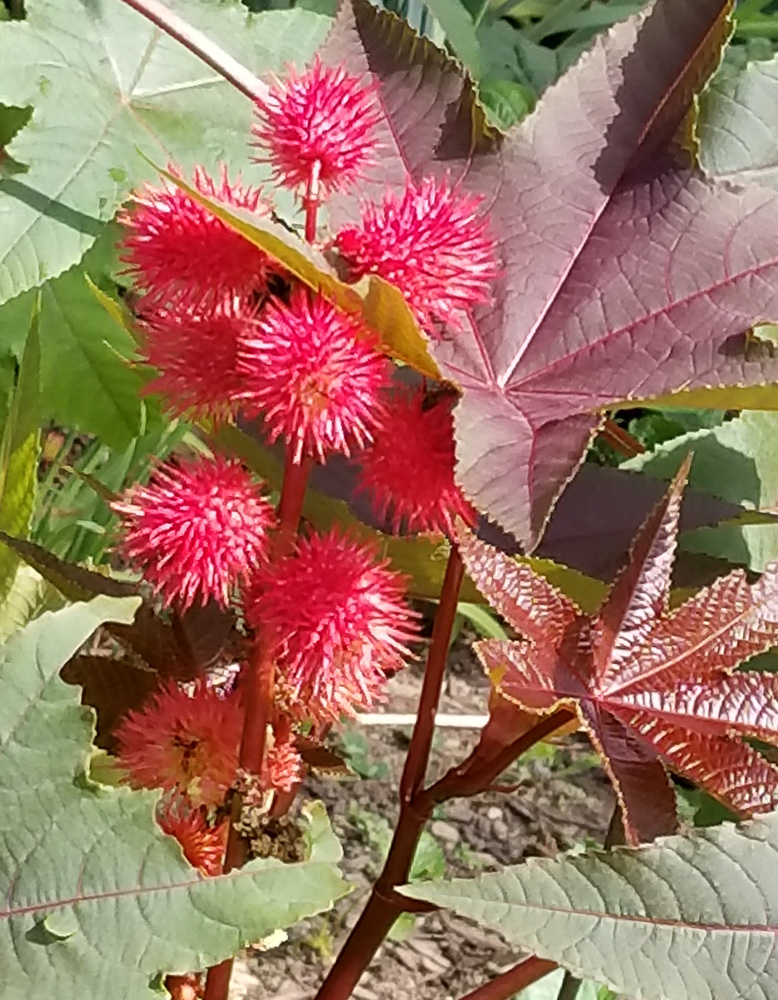
We had planned to turn around in Middlebury since this was our first ride of any significant length, but certain protocols must be observed. First we needed to find ice cream. Unfortunately this was Sunday so the only place in range was a Dairy Queen. But it sufficed.
Sorry, I don’t have any pictures of the Dairy Queen to insert here…
On our way back while we were riding on the county road section of the trail we noticed that we were about to be overtaken by a buggy. (Yes, there is something slower than a horse-drawn buggy: tired-people powered bicycles!) But they disappeared! Then we realized that these were people returning home from worship and they were turning into their driveways.
Funny how the miles on the way back seemed longer than those when we were fresh and just starting out!
Cuyahoga Valley Scenic Railroad
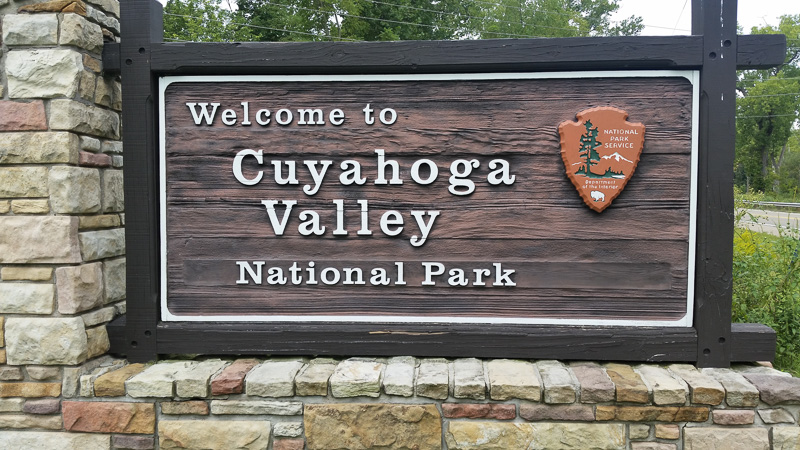
Much like Acadia National Park, Cuyahoga National Park was built from many individual land acquisitions. As a result its borders are irregular where it sits in Cuyahoga Valley between Cleveland and Akron in the Ohio & Erie Canalway. Because it is situated among existing communities there are many entrances (again like Acadia); because of this, CVNP is a no-fee park.
The Cuyahoga Valley Scenic Railroad runs the length of the the park through the Canalway, with both it and the canal taking advantage of the valley’s terrain alongside the Cuyahoga River. If you don’t know the recent history of the Cuyahoga River, it is really interesting. Once one of the country’s most polluted rivers (quiz: what happened in 1969?), it was effectively “dead,” with no animal life in the river. It now supports fish, beaver, otters, turtles, eagles, and many more species.
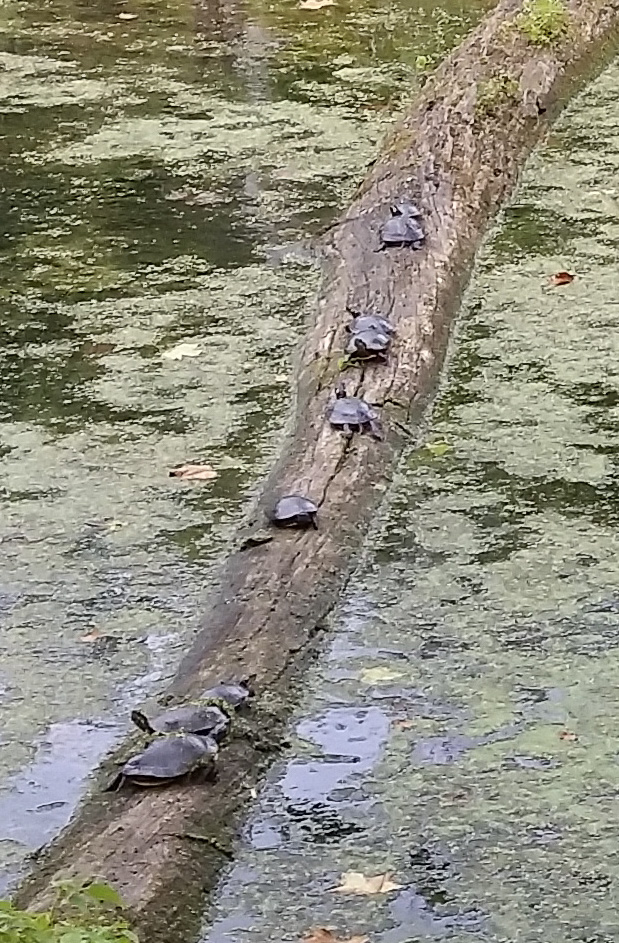
This area had been a car dump before the park. It was cleaned up with the intention of making it a parking lot, but the beavers had a different idea. It is now a marsh supporting many types of wildlife.
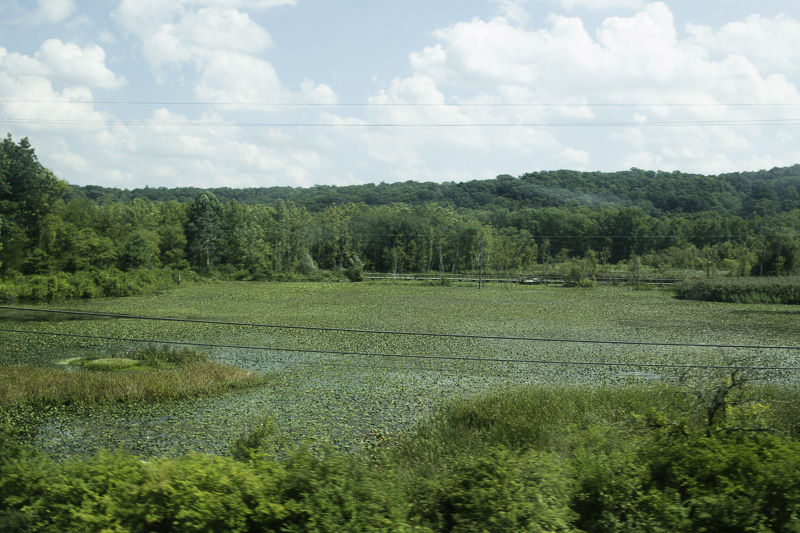
We rode the Scenic Railroad on a round trip through the entire length of the park. We rode in a dome car, offering 360° views.
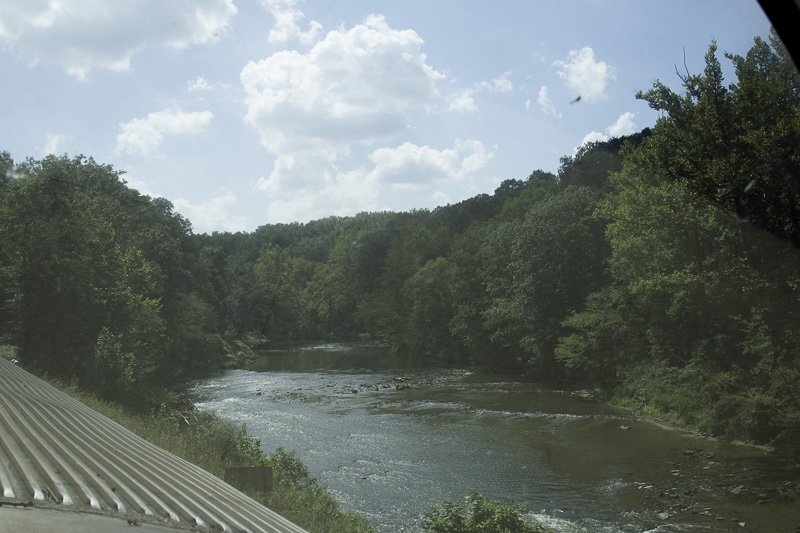
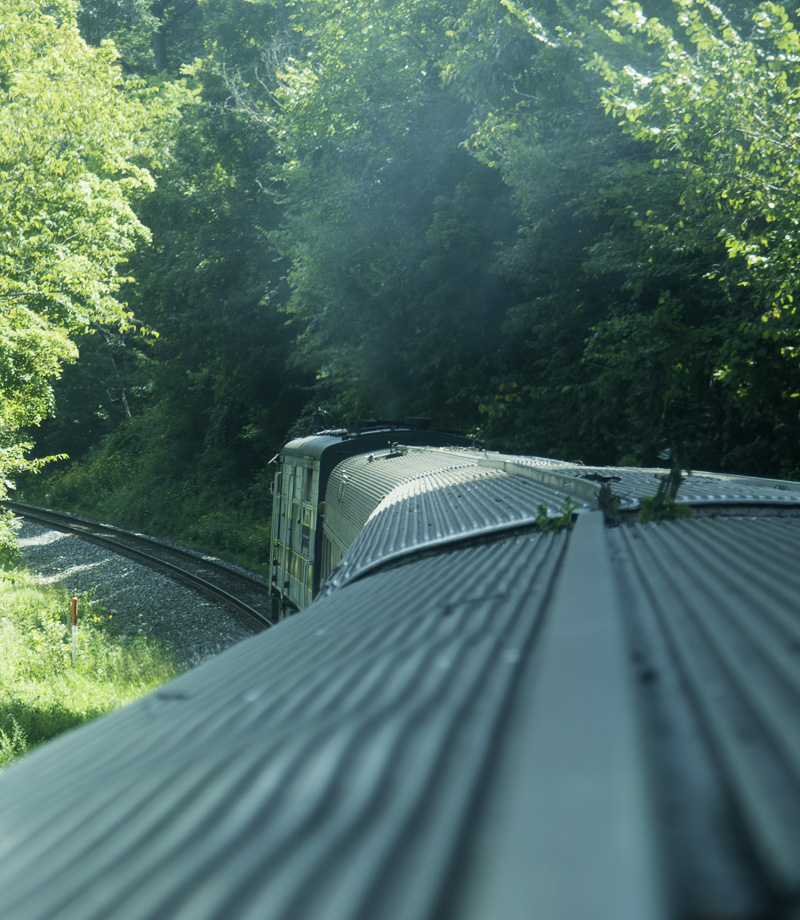
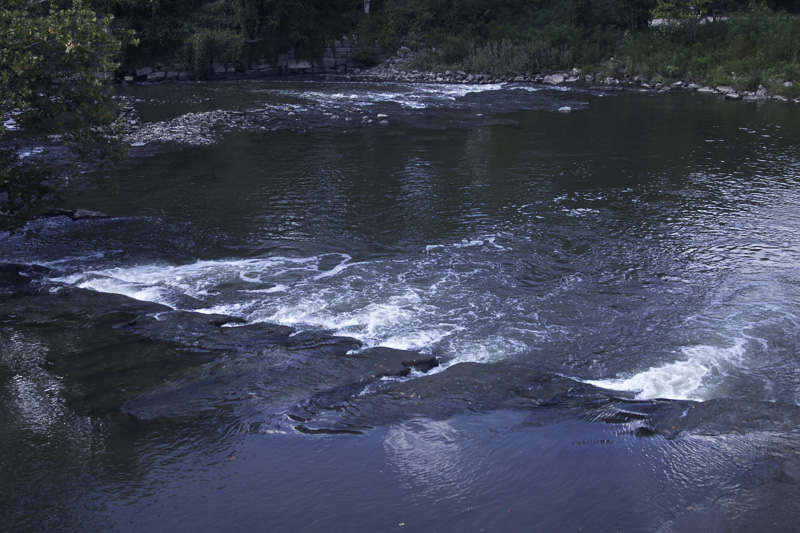
While the ownership and maintenance of the rolling stock and the daily operation of the railroad is the responsibility of the non-profit Cuyahoga Valley Scenic Railroad organization, the right-of-way and railbed is maintained by the National Park.
Ohio & Erie Canal Towpath
So what is a towpath? Before motorized vessels, barges were pulled through the canal by mules. The path they took is the towpath. Mule teams were available to rent, but many barges carried their own (two) teams of mules because they found it more economical. We were told that the passenger barges, also called “packet boats,” were often pulled by horses; I guess they were deemed to be more appropriate for the cultured (wealthy) passengers.
Because the tolerances are so tight in the locks, some canals including the Panama Canal still use “mules” in a tow system. The ship uses its own propulsion system for forward motion; the mules are now powerful electric tractors on geared tracks which use cables to maintain the ship in the center of the lock.
Overall, the Ohio & Erie Canal towpath runs 87 miles, approximately 25 miles of which is inside the park. The section in the park has been rehabilitated into a multi-use trail (walking, bicycling, and horse riding—but horses are not allowed on some sections). It is well surfaced with much being paved and the rest being hard packed; it is all suitable for road bikes and was very easy riding on our hybrids.
At times we were riding through woods, some times along the Cuyahoga River, and still others right along the canal.
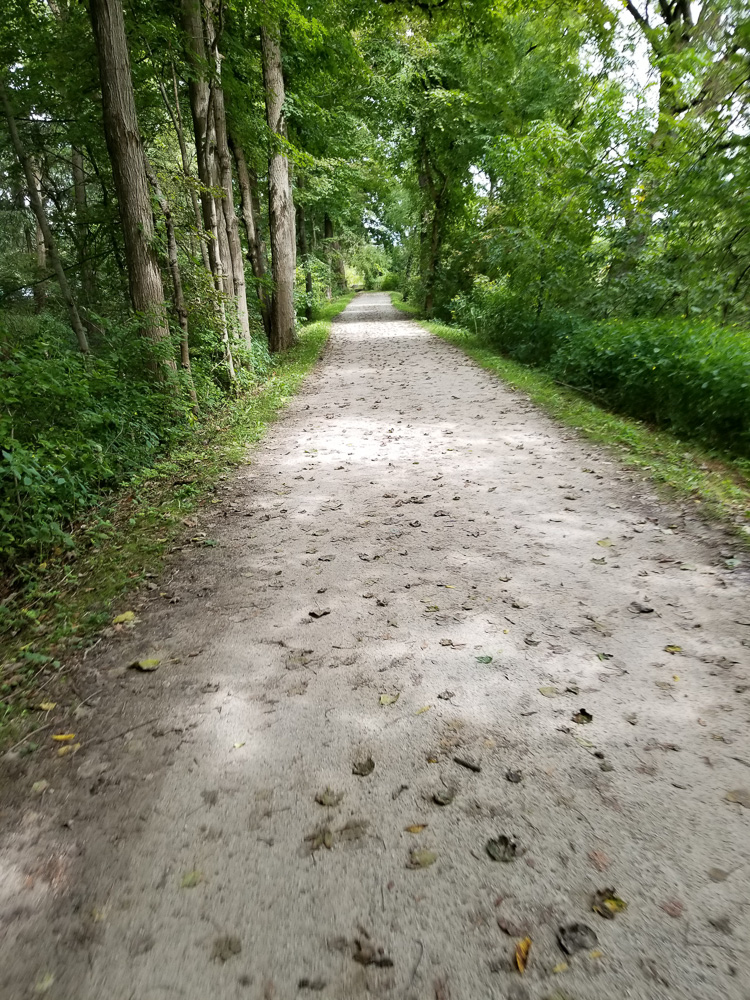
The canal brought prosperity to the area with many businesses set up along its path. Here are the remains of a mill, the raceway which powered the wheel.
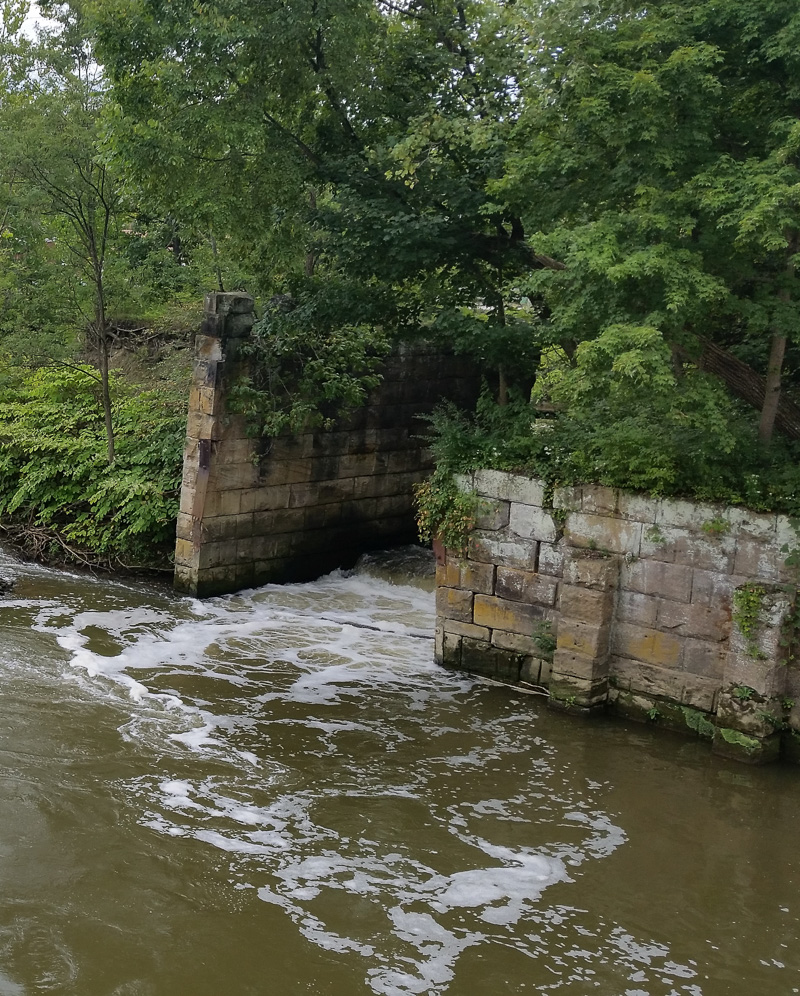
We were told by one of the Scenic Railroad staff that at the time it was constructed, this was the largest concrete bridge in the world, but I’ve been unable to confirm that. Either way, it is quite an impressive structure
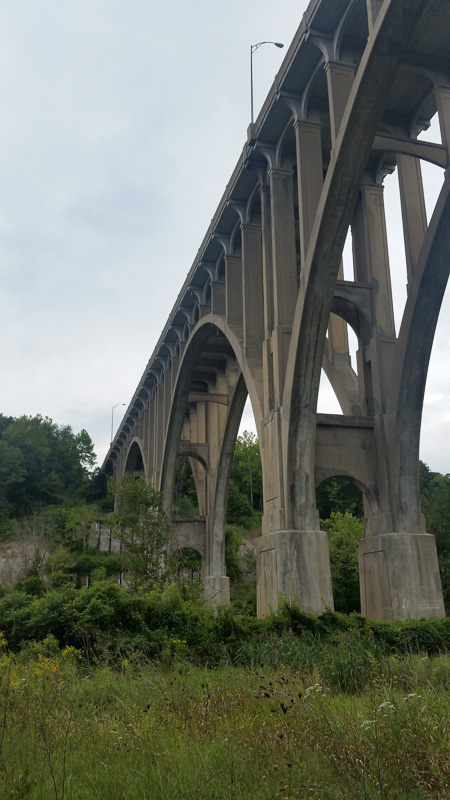
We don’t think that this will replace Interpretative Rangers, but it was an interesting method for providing information about the surrounding area to the hikers and bikers. It had a small hand-operated generator powering the player. My arm tired out before the ending of the first recording we listened to!
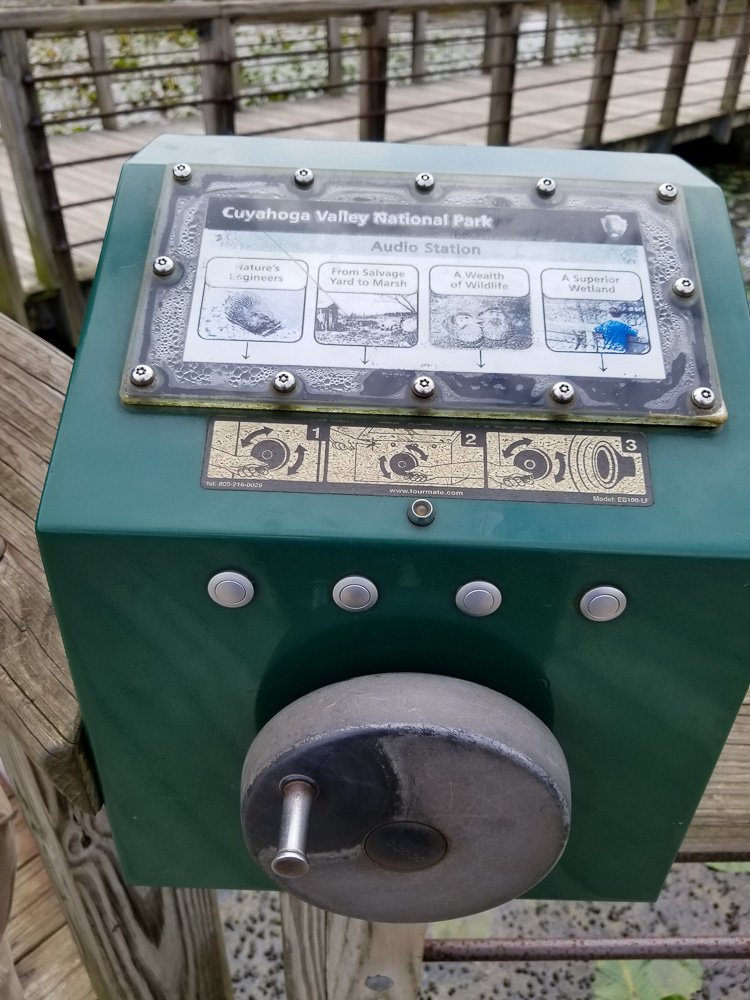
Being “lapsed” (out of shape) riders, we chose to ride toward the north, following the flow of the river; it is nominally downhill, although a drop of approximately 400′ in about 25 miles is not an overwhelming grade!
Then came the ride back to our starting point…but this time not on our bikes (they actually rode with us!). The Scenic Railway offers a program called Bike Aboard, where bikers can ride the train. This allows many people (including us) to ride the towpath for longer distances, and see more of the valley, than they would be able to if they had to make the return by pedal. The railway has three scheduled stops in its run: at each end and in the town of Peninsula which is about the midpoint. However there are six other “stations” (sometimes simply a widened spot on the right of way with a bench) at which bikers can flag down the train to board, or request the staff to stop the train so they can debark.
We’re certainly looking forward to our coming bike adventures!

